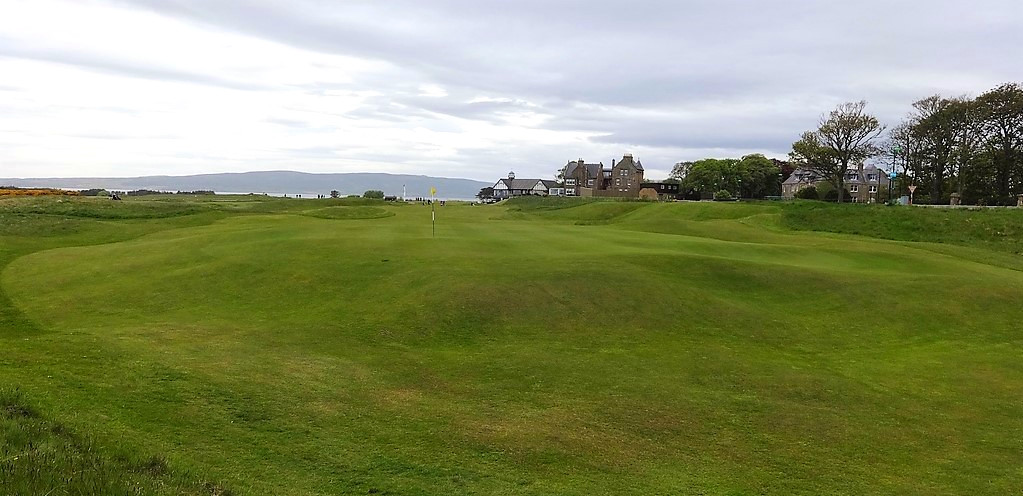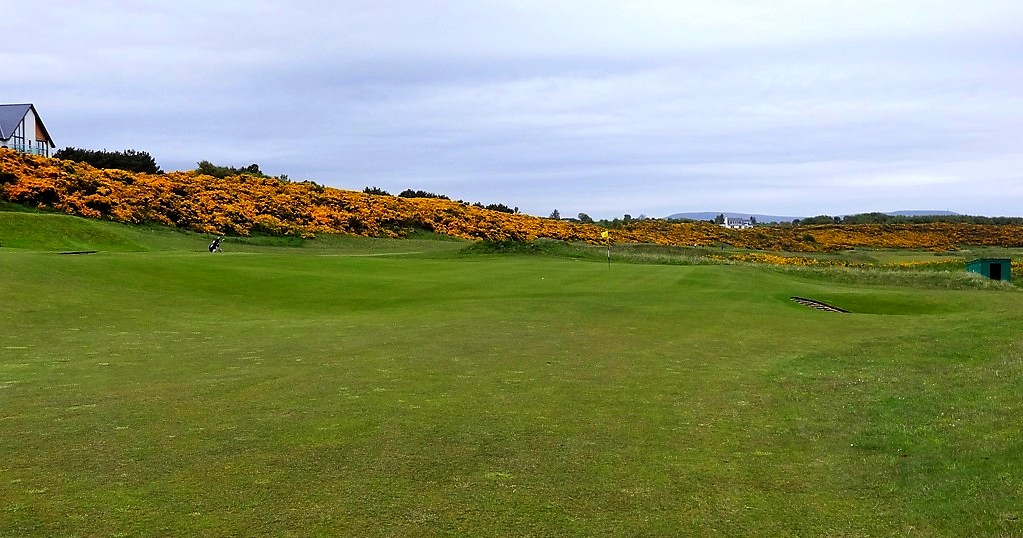
No mention of Dornoch should be made without first paying respects to John Sutherland. He joined the club as a teenager and was appointed Secretary while still a teenager. Most club members owe a great debt to a prominent gentleman or two whose strength of character and dogged perseverance served as the foundation for a successful club. Royal Dornoch is no exception and indeed may owe an even larger debt for the legacy of John Sutherland. Being the secretary of the club for nearly 60 years, his death in 1941 must have been a severe blow to club and town. It is impossible to underestimate the influence and skill of John Sutherland. He oversaw the transition of a sleepy Scottish club into one of the most famed and "royal" in the world. Sutherland was partly able to profile the town and links via his position as a writer for Golf Illustrated and the London Daily News. Some were convinced to make the journey north to sample the highly reputed links of (newly minted) Royal Dornoch and these included the influential Ernest Holderness and Joyce and Roger Wethered. The Great Triumvirate also made their way to Dornoch for an exhibition match in 1906. Fittingly Braid won with two scores of 75 and in a letter written to the Captain of the club he stated “You have indeed got a fine course up there at Dornoch. I should think the finest in Scotland.”
Let us not forget in addition to his talents as an architect and administrator, Mr Sutherland could play the game. He won the club’s Silver Medal on 11 occasions. Yet Sutherland had keen competition as the best architect to come from Dornoch; of course I write of Donald Ross. It wasn’t long after Sutherland took up the position of Secretary that he could see there was something about the young keeper of the green and Sutherland encouraged Ross to seek the tutelage of Old Tom Morris. The rest of the story is well known....
However, in the case of Dornoch, Sutherland's sway held supreme as the only input to the course made by Ross was to the 1st in 1921 At the same time Sutherland gave us the 2nd. Due to the Royal Airforce commandeering the final six holes of the Ladies Course (now called the Struie), after WWII the club decided to push northward for five holes; and thus was created a very fine stretch of golf which commences with the monster 7th and ends with the great par four 11th. The 13th was also a new hole as was the 6th which used to play to the current 11th green. Robbie Grant, the Greenkeeper and 1920 Open champion, George Duncan, oversaw the changes which were unveiled in 1948. One can only wonder if and how the course may differ today if Sutherland were alive to oversee the major changes after WWII. Be that as it may, Dornoch is very special and commands a unique place in the history of Scottish golf; which is remarkable considering only one major has been staged on the links, the 1985 Amateur. The lack of hosting major events is surely due to Dornoch’s location a scant eight degrees south of the Arctic Circle and hard on Embo Bay. Even if the links isn’t the most difficult of tests, the majesty of the setting and thrill of the golf is quite enough to satisfy all who care about such matters. Testament to this fact is clear when one considers the popularity of the Carnegie Shield, an event held every summer. 2013 marked the 100th playing of the tournament. The namesake of the grand silver trophy is indeed
the Andrew Carnegie, whose generosity knew no bounds. It is thought that in the last two decades of his life he donated $350 million...that is the equivalent to over $8 billion in today's money!
The course follows a lazy S pattern along the shore and can be fairly called a classic out and back design. It is also fair to say Dornoch's opener is gentle, yet this should not convey the idea the hole lacks interest.


Many will stand on the 2nd tee and not notice the bank of gorse to the right for the frightening sight of the turtleback green fronted by bunkers. For the most part the evil weed is under control, but there is a glaring issue here and on #17. This is one of those holes where a good shot is great and average shot can be awful. It isn't a bad play to be short of the green where the most amount of space is available for recovery. The general theme of the upturned saucer green will be oft repeated throughout the round.

Despite the compelling nature of the first two holes, some may wonder what all the fuss is about. Once clearing the whins on the way to the third tee the world opens up first with a view of the 17th green then with much of the links spread tantalizing below.

Playing the 3rd is nearly as wonderful as the view....this is just another ho hum superb hole in the collection of Dornoch gems.


More to follow.
Ciao